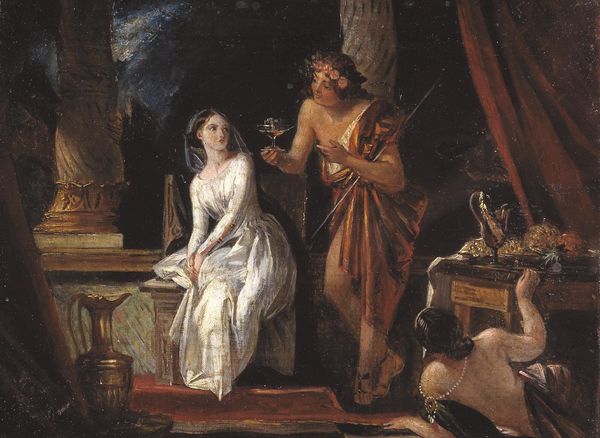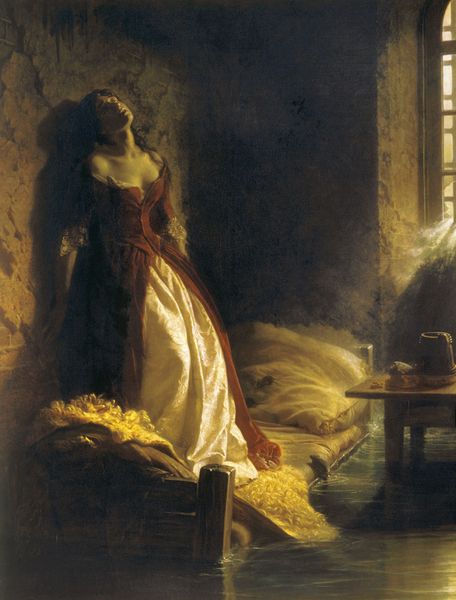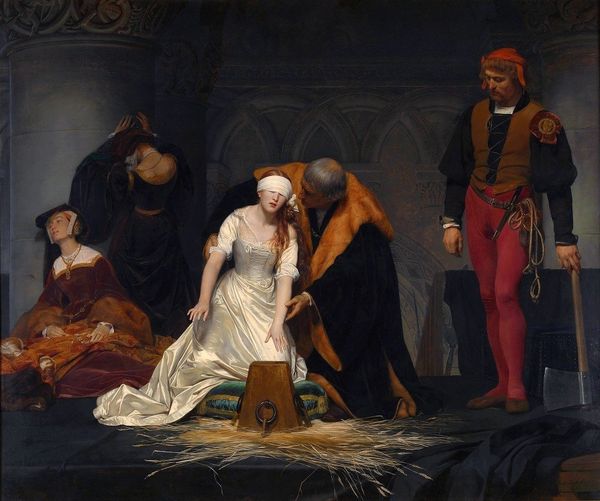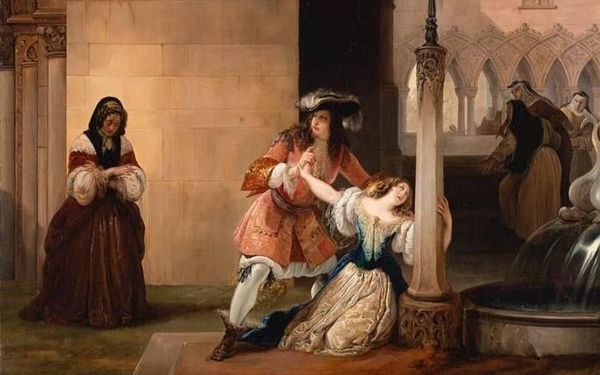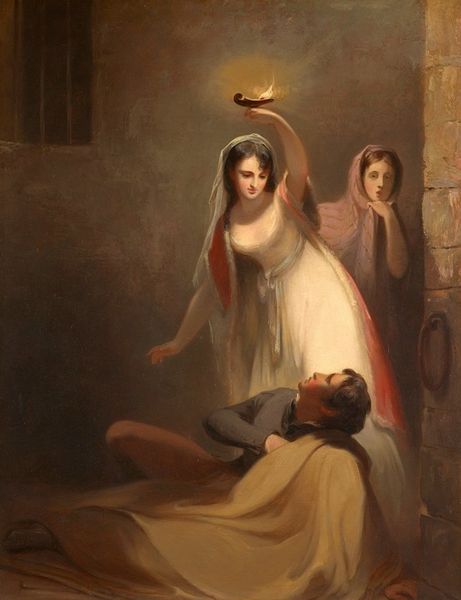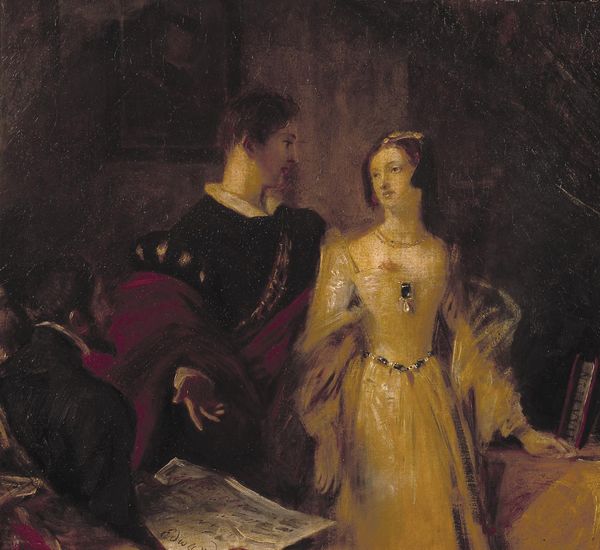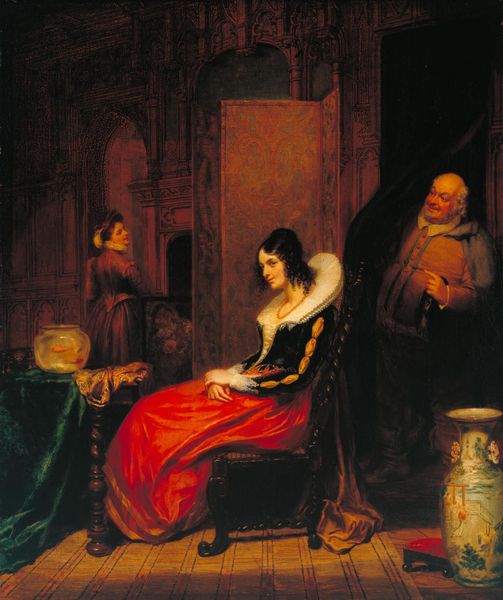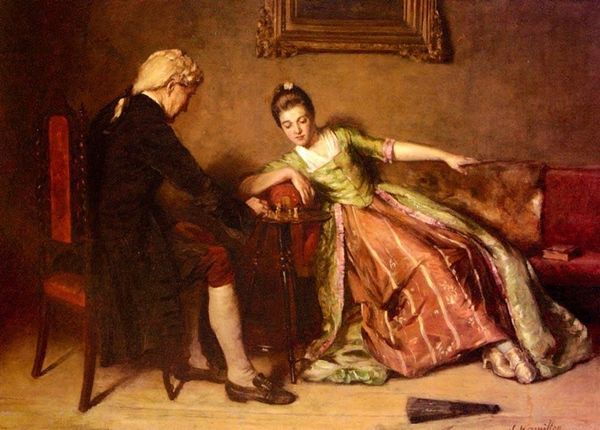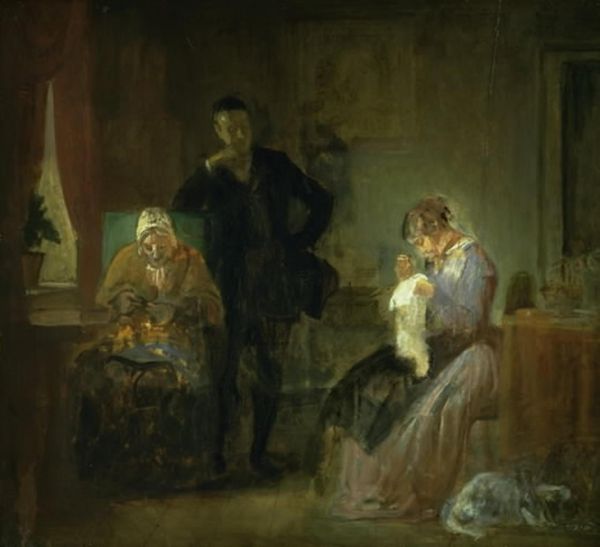
Amoret, Aemylia and Prince Arthur, in the Cottage of Sclaunder Possibly 1845
0:00
0:00
Dimensions: support: 591 x 889 mm frame: 850 x 1140 x 110 mm
Copyright: CC-BY-NC-ND 4.0 DEED, Photo: Tate
Curator: This somber painting by Frederick Richard Pickersgill, held here at the Tate, is titled *Amoret, Aemylia and Prince Arthur, in the Cottage of Sclaunder*. It depicts a scene of weary figures in muted tones. What's your initial impression? Editor: A heavy sadness. The weight of whatever is happening here is palpable, almost oppressive. The scene is composed like a stage—or a tomb. Curator: Pickersgill often drew inspiration from literature. This painting captures a scene from Edmund Spenser's *The Faerie Queen*, where the characters find themselves in a den of deceit and despair. Editor: Ah, Sclaunder—the allegorical embodiment of slander and ill-repute. The scene then speaks to the precariousness of virtue, especially for women, subjected to gossip and accusation. Curator: Precisely. There's a vulnerability in their postures, seeking solace and protection. The figures seem to be huddling together, seeking comfort amidst a threat. Editor: And that shadowy figure in the corner, lurking. Her downcast gaze suggests an internalized oppression too, as if aware of the limitations of her gender and status. Curator: The painting captures the feeling of entrapment and the psychological toll of being targeted by malicious rumors, which, for women, too often leads to material consequences. Editor: Ultimately, it's a stark reminder of the insidious power of defamation, and how easily it can shatter lives and reputations even today. It is a dark painting with a message that resonates. Curator: A somber note to end on, but an important one, I think.

